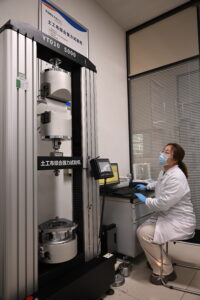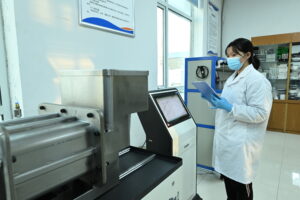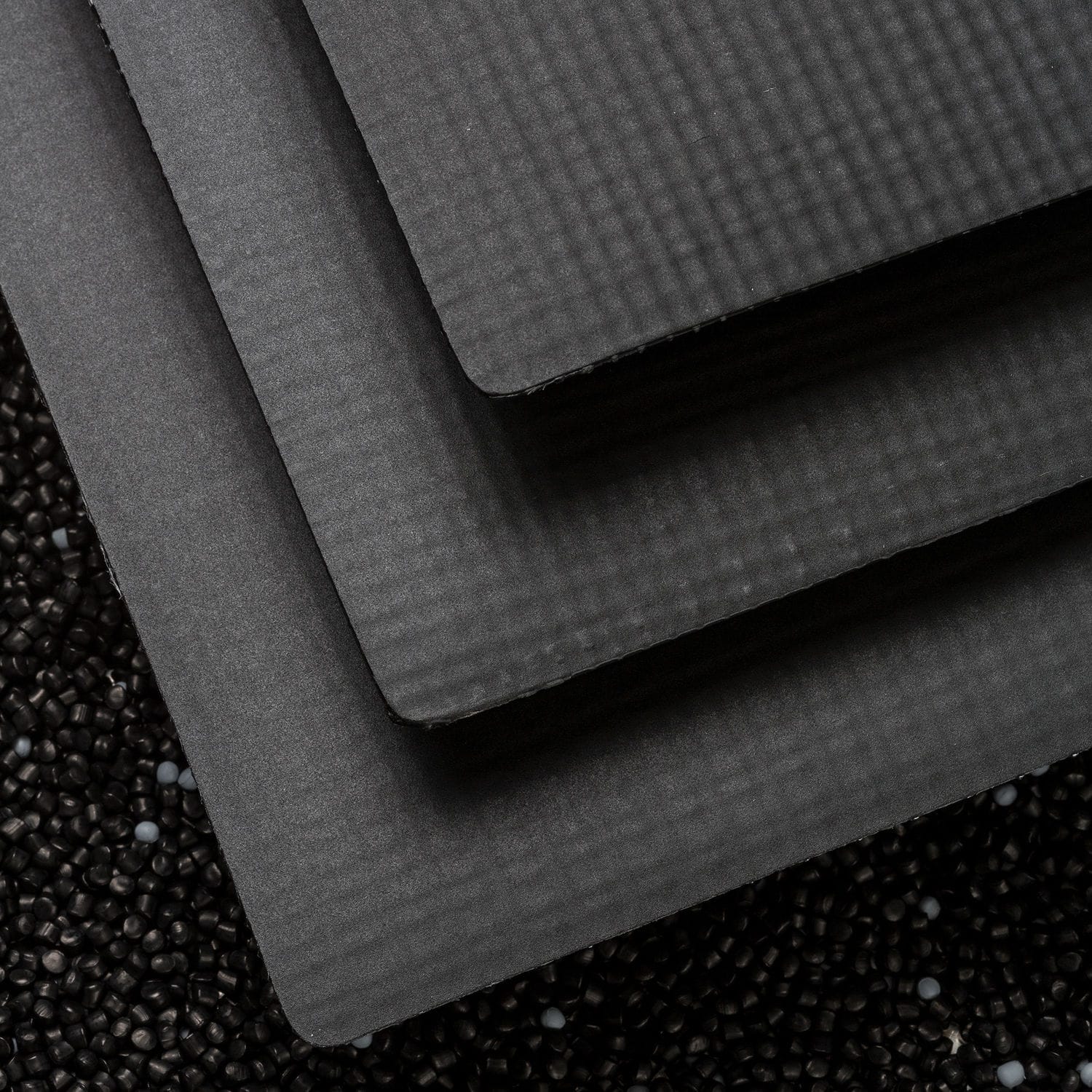The tensile strength test and tear strength test of geomembrane are one of the important indicators to evaluate the mechanical properties of geomembrane materials.
A geomembrane is a thin film material used to prevent the penetration of water, gas or chemicals. Common geomembranes include HDPE (high-density polyethylene), LDPE (low-density polyethylene), PVC (polyvinyl chloride), etc.
Tensile strength test and tear strength test of geomembrane
Tensile strength test:
Tensile strength testing is used to determine the maximum load-bearing capacity and tensile properties of geomembranes under tensile loading conditions. The following are general tensile strength testing procedures:
Prepare standard test specimens, usually rectangular in shape, with standard dimensions, according to applicable standards.
Install or clamp the sample on the fixture on the tensile testing machine to ensure that the size and clamping method of the sample meet the standard requirements.
Apply a uniform tensile load to gradually increase the length of the specimen until the specimen breaks.
During the test, the tensile load and specimen elongation data are recorded, and the tensile stress and strain are calculated.
By drawing the stress-strain curve, the tensile strength index of the geomembrane under different loads can be determined, such as the maximum tensile strength, yield strength and fracture strength.

Tear Strength Test:
The tear strength test is used to evaluate the tear resistance and tear propagation ability of geomembranes under tear stress. The following are the general tear strength testing steps:
Prepare standard tear specimens, usually trapezoidal in shape, with standard dimensions and initial cuts.
Clamp the specimen in the grips on the tear tester, making sure that the notch of the specimen is on the line of gripping the grips.
Apply a tensile force perpendicular to the cut on the specimen, causing the cut to begin to expand.
Monitor load and displacement for tear propagation and record tear load as a function of time or displacement.
Calculate the tear strength and tear index based on the test data to evaluate the tear performance of the geomembrane.
These test methods are usually carried out in accordance with the corresponding standards developed by international standard organizations (such as ASTM, ISO).
When testing, it is recommended to follow the applicable standard operating procedures and professional testing in a laboratory or testing facility to ensure accurate and reliable results.

About Us
Tinhy has an in-house national standard laboratory certified by GMA, assuring our customers that we supply the required standards in product testing. Extensive manufacturing quality assurance(MQA) testings are performed from raw materials to finished products.
The management system is certified by ISO9001(quality management system), ISO14001(environmental management system), and ISO45001(occupational health and safety).
Over the years, our company obtained CE Certification, 3A Credit Rating Certificate, and other qualifications, and has the right to import and export to any part of the world.
Author
-

Founded in 2002, Tinhy's team focuses on the manufacturing, marketing, installation, application and research and development of geosynthetic materials.
View all posts




